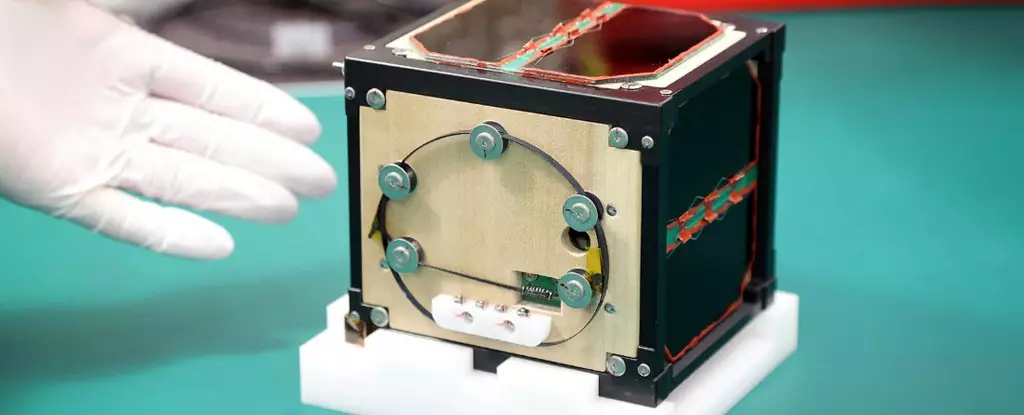The recent launch of LignoSat, the world’s first wooden satellite, marks a groundbreaking moment in space exploration. This innovative spacecraft was launched on a SpaceX rocket as part of a resupply mission to the International Space Station (ISS). Developed by researchers at Kyoto University, LignoSat represents a significant leap forward, both in materials science and environmental consciousness. The satellite’s unique composition of wooden materials sets the stage for exciting new developments in satellite technology and a potential shift away from harmful metal debris in Earth’s atmosphere.
One of the primary motivations behind the creation of LignoSat is the growing concern about the environmental impact of space debris. As retired satellites re-enter the Earth’s atmosphere, they often disintegrate and release metal particles that can pose risks to both ecosystems and telecommunications infrastructure. By utilizing wood, scientists at Kyoto University hope to mitigate these risks, allowing for a cleaner re-entry process. The expectation is that the wooden structure of LignoSat will burn up completely upon re-entry, thus significantly reducing hazardous fallout. This eco-friendly approach could pave the way for a new standard in satellite design, prioritizing sustainability while maintaining functionality.
LignoSat’s design is remarkably compact, with each side measuring only 10 centimeters (approximately four inches). It was safely launched from NASA’s Kennedy Space Center, a significant achievement highlighted by the successful deployment in the specialized container provided by the Japan Aerospace Exploration Agency (JAXA). According to a spokesperson for Sumitomo Forestry, a co-developer of the project, the satellite will be stationed at the ISS shortly and is scheduled for deployment into space approximately one month post-launch. During its time in orbit, LignoSat will undergo rigorous testing to assess its durability and capability to withstand the extreme conditions of space.
The underlying goal of this experiment is to collect data regarding the performance of wooden materials in space. Researchers are particularly keen on analyzing how wood reacts to significant temperature fluctuations and various strains, which are inevitable in the harsh environment of outer space. Through this data collection, academic and scientific communities aim to explore the feasibility of using non-metal materials in future satellite designs. Distinguished astronaut and special professor at Kyoto University, Takao Doi, emphasizes that the shift towards wooden satellites could revolutionize the industry, making non-metallic options the norm rather than an exception.
As humanity continues to push the boundaries of space exploration, innovations such as LignoSat highlight the marriage of cutting-edge science and environmental responsibility. The implications of using sustainable materials in satellite construction are profound, potentially leading to a significant reduction in space debris and a healthier planet. While it remains to be seen how LignoSat will perform in its orbital endeavors, its launch undoubtedly signifies the dawn of a new era in aerospace engineering, one where ecological concerns take center stage alongside scientific advancement. With ongoing research and positive results, we may soon witness a future where wooden satellites become commonplace in the ever-expanding cosmos.

